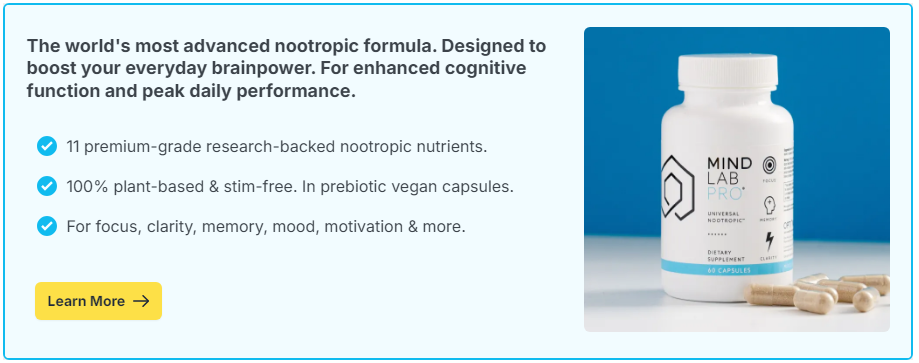
Someone cuts you off in traffic, and you instantly think, “They must be a selfish jerk.”
Your friend cancels lunch, and a story pops up: “Maybe they’re mad at me.”
You forget something important and tell yourself, “I’m just scatterbrained.”
Every day, your brain spins countless little stories — connecting dots, explaining gaps, filling in blanks.
Most of the time, you don’t even notice it’s happening.
This tendency, known as narrative bias, reveals something profound about how the mind organizes reality:
Your brain isn’t just a passive recorder of facts — it’s a meaning-making machine, forever weaving threads into coherent tales.
Contents
- What Is Narrative Bias?
- The Evolutionary Roots of Story-Making
- How Narrative Bias Shapes Memory
- The Double-Edged Sword of Story-Making
- Brain Supplements: Supporting Cognitive Flexibility and Emotional Balance
- How to Work Skillfully with Your Inner Storyteller
- When Narrative Bias Becomes Destructive
- Real-World Examples: Storytelling’s Power in Action
- Becoming a Conscious Storyteller
- About the Author
What Is Narrative Bias?
Narrative bias is the brain’s innate tendency to interpret information and experiences as part of a coherent story — often favoring simplicity, emotional resonance, and causal logic, even when the actual situation is more complex or ambiguous.
Key Features of Narrative Bias
- Pattern Seeking: Finding cause-and-effect relationships, even where none exist.
- Coherence Over Accuracy: Preferring consistent, emotionally satisfying explanations rather than purely factual accounts.
- Memory Shaping: Reconstructing past events into more “story-like” structures during recall.
In short: your brain prefers a good story to a confusing pile of facts — even if it has to invent connections to make it happen.
The Evolutionary Roots of Story-Making
Narrative bias isn’t a flaw.
It’s a deeply adaptive survival tool, honed over millennia to help humans make sense of a complex, uncertain world.
Evolutionary Advantages
- Predictive Modeling: Stories help anticipate outcomes and prepare for future events.
- Social Bonding: Sharing narratives strengthens community ties and cultural identity.
- Emotional Regulation: Constructing meaningful explanations for pain or loss supports psychological resilience.
Your ancestors who could quickly stitch together meaningful patterns — even imperfect ones — were often better equipped to survive and thrive.
How Narrative Bias Shapes Memory
Your memories aren’t hard drives storing unfiltered data.
They’re dynamic reconstructions, heavily shaped by the brain’s storytelling impulse.
Memory and Narrative
- Selective Editing: Details that don’t fit the main story often fade or distort over time.
- Theme Creation: Separate events are woven into thematic arcs, like “the year everything changed.”
- Emotional Coloring: Memories tied to strong emotions — especially those fitting a coherent narrative — become more vivid and influential.
Every time you recall the past, you’re not just reviewing it — you’re rewriting it slightly, polishing the story’s edges.
The Double-Edged Sword of Story-Making
While narrative bias offers cognitive shortcuts, it also carries risks when left unchecked.
Potential Pitfalls
- Oversimplification: Reducing complex realities into black-and-white narratives obscures nuance and truth.
- Confirmation Bias Reinforcement: Once a narrative is formed, the brain favors information that fits and disregards information that challenges it.
- Emotional Traps: Stories built around fear, shame, or resentment can perpetuate negative thought loops.
Your mind’s storytelling superpower is invaluable — but it needs conscious guidance to serve, not sabotage, your best thinking.
Brain Supplements: Supporting Cognitive Flexibility and Emotional Balance
Some individuals support narrative awareness and mental agility with nootropic supplements designed to enhance cognitive flexibility, emotional regulation, and memory processing.
Ingredients like citicoline, lion’s mane mushroom, and rhodiola rosea are studied for their potential to strengthen executive function and stress resilience — helping maintain perspective and adapt narratives as needed.
Always seek professional guidance when incorporating supplements into your cognitive wellness plan.
How to Work Skillfully with Your Inner Storyteller
You can’t (and shouldn’t) turn off your brain’s storytelling instinct.
But you can become a wiser editor and director of your internal narratives.
Strategies for Healthy Story-Making
- Practice Cognitive Reappraisal: Intentionally reinterpret events from multiple angles to broaden perspective.
- Challenge Causal Assumptions: Notice when you’re inserting imagined motives or causes — and question them.
- Value Complexity: Resist oversimplified explanations; allow life to be messy, layered, and paradoxical.
- Mind Your Emotional Filters: Recognize when strong emotions may be distorting the story you tell yourself.
- Use Narrative Therapy Techniques: Write or speak alternative versions of your “life story” emphasizing growth, strength, and possibility.
Your mind is a brilliant author — but you get to co-author your story too.
When Narrative Bias Becomes Destructive
Sometimes, internal narratives become rigid, toxic, or self-limiting, reinforcing suffering instead of healing or empowerment.
Warning Signs
- Fixed Identity Stories: (“I’m just a failure.”)
- Chronic Victim Narratives: (“Bad things always happen to me.”)
- Relationship Scripts: (“Everyone always leaves.”)
In these cases, therapy, journaling, coaching, or mindfulness practices can help loosen and rewrite destructive story patterns toward more empowering narratives.
Real-World Examples: Storytelling’s Power in Action
Great leaders, artists, and thinkers have long understood — and wielded — the power of narrative to shape minds, cultures, and futures.
Examples
- Nelson Mandela: Reframed personal suffering into a broader story of reconciliation and national rebirth.
- Haruki Murakami: Blends surrealism with everyday life, revealing how personal and cultural myths intertwine.
- Steve Jobs: Mastered narrative branding, making Apple’s story as vital as its technology.
The stories we tell shape not just memory — but meaning itself.
Becoming a Conscious Storyteller
Your mind weaves tales.
It always has.
It always will.
The power lies in learning to see the stitching, to loosen the tight threads when needed, to weave new colors into old patterns when growth calls for it.
Because you are more than the first story your mind told you about who you are, or what happened, or what’s possible next.
You are the storyteller.
You are the rewriter.
And the next chapter is always, beautifully, unwritten — waiting for you to begin.

